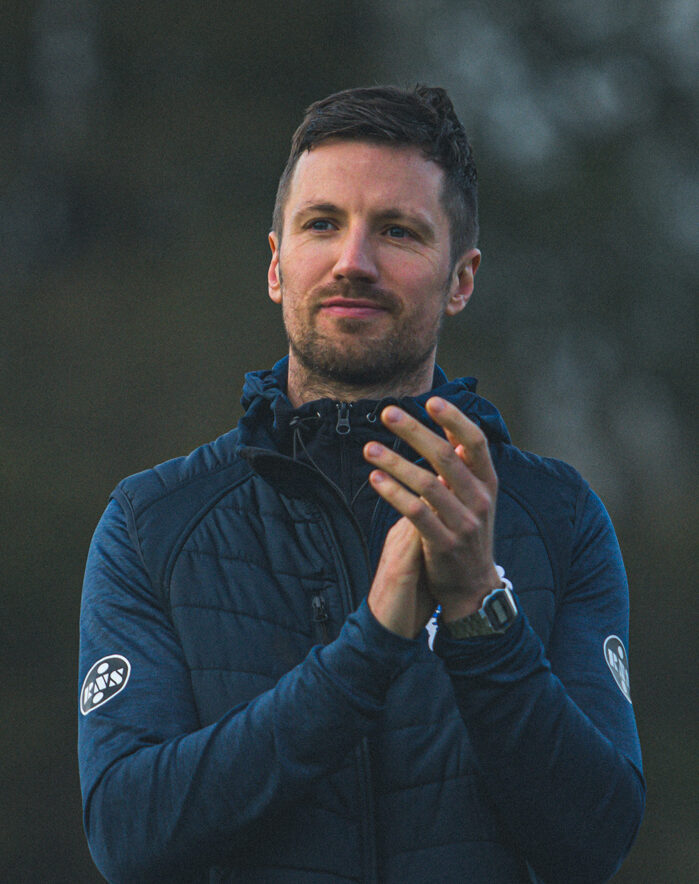
It is a truism that all parents want the best education possible for their children. All young football players want to give themselves the best opportunity to succeed in a sport that has incredibly lucrative rewards for reaching the top of the mountain. Both the environment and pathway play a huge part in where the destination ends for that player. What and whom the player is exposed to along that journey can shape their profile. Football, because of its multi and variable skills and part-team and part individual character, is not a sport whose proponents’ development is easy to predict. Measuring whether a player fulfilled their maximum potential is, therefore, very difficult. I have a tremendous amount of observational, anecdotal and empirical evidence that there is so much untapped potential and that there are so many players that are playing below their achievable level. Non-league in England is populated with players that could have played a much higher standard had they shown the attitude, been given the right coaching, been in the right programme, not got injured at a crucial moment or had the right opportunity at the correct time. If one thinks that the Premier League is a result of the best potential developed from an early age then that is a huge mistake. Many institutions give up on players too early and do not see the true long term potential.
They see problems, holes and deficiencies and not solutions; the reasons a player cannot play at a high level rather than the reasons that they can. Long term potential does not always look how we would ‘like’ it to and it is not always obvious. There are so many players ‘nailed on’ (as we say) in youth ages that finish up not even playing the game at 21, just as there are so many players playing elite level first team that were not the best players at under 13s. There are hundreds of examples but take Harry Kane; he finished bottom of every physical test at Spurs at under 15 yet went on to captain England a few years later. Players are all on unique journeys, are all on different paths and need different things at different times; no two players are the same. The job of youth coaches it to try to bring the very best out of each player but this message often gets lost and for a variety of reasons. It is not as simple as allowing players to play with freedom and being asked to express themselves. Young players need mentors who encourage them to enhance their personal qualities every day. They need leaders who remind them continually what they are and barriers that may stop them.
As a parent, make sure your child understands their direction. Make sure that they have an elite strength that gets them in any team but that their weaknesses do not get them out of it. Working on weaknesses is nowhere near as important as developing strengths. The question each young player should ask themselves is ‘what reason am I giving any coach or manager to select me in their team?’. Invest in being better … every day. Hold yourself accountable and develop a mentality that does not consider excuses. These life lessons are imperative for success and transferable away from football.
A player must accept that they are disposable, and that’s the reality. Many coaches around the world at all levels from grassroots to elite football, will not regularly tailor sessions around the individual. Therefore, players must take responsibility and accountability for their own careers. Young players are brilliant at practising the wrong things and investing time into activities that will make minimal differences long term. It borders on being humorous the number of times young players come into the training ground early and practise things they never use in games, such as free kicks! Players must have guidance from those around them that have regular influence. They must understand themselves and what they bring to a team. What are they working on for 20 minutes every single day that makes their strength even more effective? Cristiano Ronaldo’s weaknesses would include defending in 1v1 situations. But what did he work on most days in his Man United years? His efficiency to create and finish. He felt the back of the net continually all week from all angles, off both feet, on the ground, in the air, over variable distances and situations. The concept is simple but its surprisingly not commonplace. Practise what is needed not only in your position but for your profile. If you are a Beckham type right winger who never goes 1v1 but delivers consistently, work on crossing. Do not waste endless hours dribbling 1v1 because a right wing profile demands that. Know what you are and know your limitations then prioritise what you need. For older players, what is your elite strength? For younger players, what is your elite superpower? In the modern game, players cannot be mechanical and robotic. Guardiola’s influence has led to a great misconception that elite level football is all about one and two touch speed of play and thought – for me it’s often the opposite. The elite players slow the game down better than the very good ones. Think of the best players of all time – Messi, Cruyff, Zidane etc; they look like they have all the time in the world on the ball. The top players are not on fast forward all game. Drawing players in to create space and overload specific areas of the field, finding spaces and creating numerical supremacy; it all comes from slowing down the game. If you play one speed and minimal touches all of the time then you are constantly playing people into pressure. Having the technique to stay on the ball and outplay an opponent and to use your body in 1v1 situations are the demands of the modern game. Over 80% of 1v1 situations consist of pressure behind or from the side, thus players have to be comfortable in these moments. One and two touch decisions will not always be options, you cannot pass your way out of everything.
Football is an unpredictable game with millions of influencing variables. Therefore, we must produce unpredictable players who are flexible and can adapt. The ability to find free spaces in organised jungles, seeing what is coming before it happens, outplaying opponents to free a teammate or staying on the ball and playing an individual style regardless of the game and emotion are crucial. These elements exist at under 9s worldwide. The moment it hit me ‘smack in the face, the wake up call’, was September 2014. I was working at a Championship football club and the under 9s were training on a pitch next to the under 21s. On the right-hand field, every player had one intent in mind; get the ball and head straight for that goal. The energy, creativity, individualism and directness was free flowing in every single player as they just wanted to show their skills and feel the back of the net. They saw one thing and it consisted of metal poles and string netting. I then turned my head to the left and watched the other set of players making sideways passes, going backwards continually and playing with what appeared to be the sole intent of not making mistakes because they feared the consequences. As you have guessed the latter were the adults! The journey, our system, coaches the innocence, creativity and spontaneity out of those children. Our restricted touch conditions, over emphasis on tactics and modern trend of reducing space covers the diamond in dirt so that the diamond doesn’t even recognise itself in the end and the shine goes. It sits in that dirt with no one realising what it really is deep down. As coaches we need to be squeezing creativity out of these young players, rewarding individualistic qualities and developing the innate and personal talent of a youngster rather than striving to correct and highlight weaknesses.


